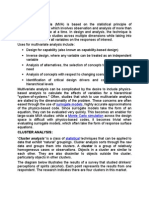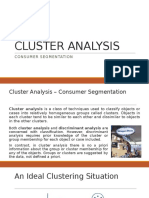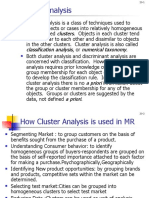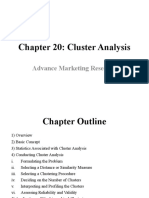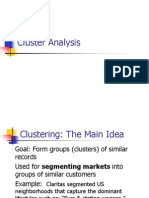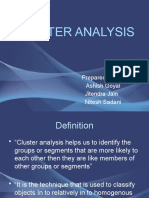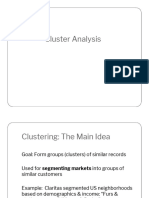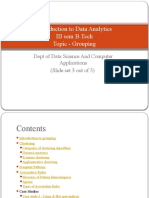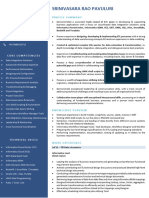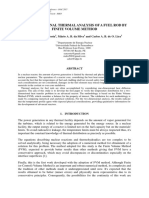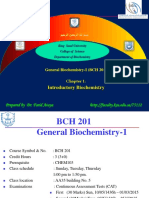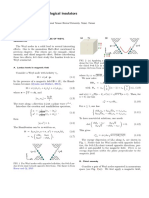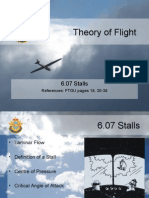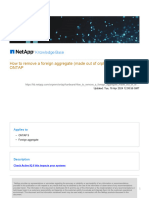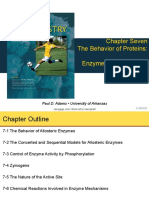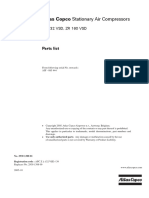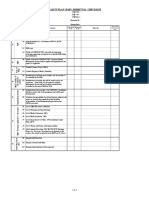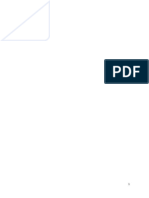0% found this document useful (0 votes)
111 views3 pagesIn Marketing, Cluster Analysis Is Used For: Statistical
Cluster analysis is a statistical technique that groups raw data into clusters, where objects within a cluster are similar to each other and dissimilar to objects outside the cluster. It can identify natural groupings in data without distinguishing between dependent and independent variables. Common applications in marketing include market segmentation, product positioning, and selecting test markets. The basic procedure involves selecting variables and a distance measure, choosing a clustering technique, determining the number of clusters, mapping and interpreting the results. Popular hierarchical clustering techniques build clusters incrementally from individual objects or by splitting a large cluster. Non-hierarchical k-means clustering assigns objects to predefined cluster centers.
Uploaded by
bharticCopyright
© © All Rights Reserved
We take content rights seriously. If you suspect this is your content, claim it here.
Available Formats
Download as ODT, PDF, TXT or read online on Scribd
0% found this document useful (0 votes)
111 views3 pagesIn Marketing, Cluster Analysis Is Used For: Statistical
Cluster analysis is a statistical technique that groups raw data into clusters, where objects within a cluster are similar to each other and dissimilar to objects outside the cluster. It can identify natural groupings in data without distinguishing between dependent and independent variables. Common applications in marketing include market segmentation, product positioning, and selecting test markets. The basic procedure involves selecting variables and a distance measure, choosing a clustering technique, determining the number of clusters, mapping and interpreting the results. Popular hierarchical clustering techniques build clusters incrementally from individual objects or by splitting a large cluster. Non-hierarchical k-means clustering assigns objects to predefined cluster centers.
Uploaded by
bharticCopyright
© © All Rights Reserved
We take content rights seriously. If you suspect this is your content, claim it here.
Available Formats
Download as ODT, PDF, TXT or read online on Scribd
/ 3
